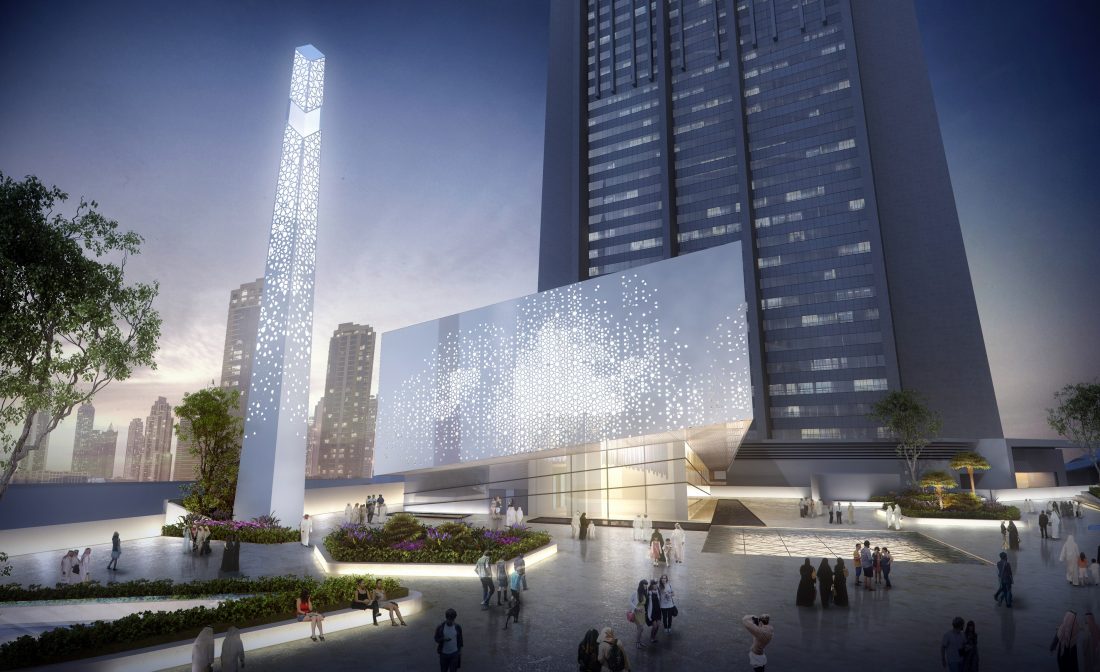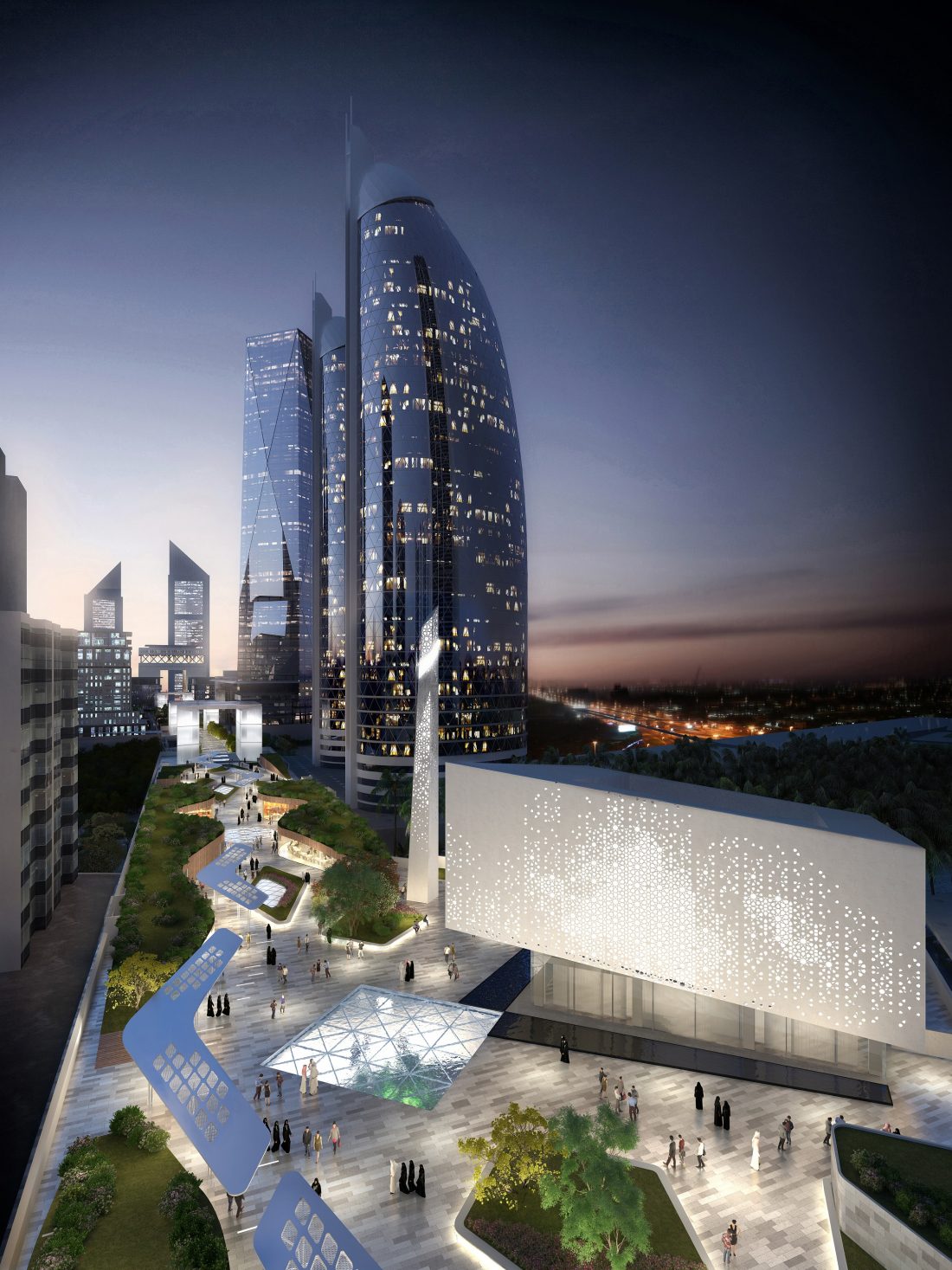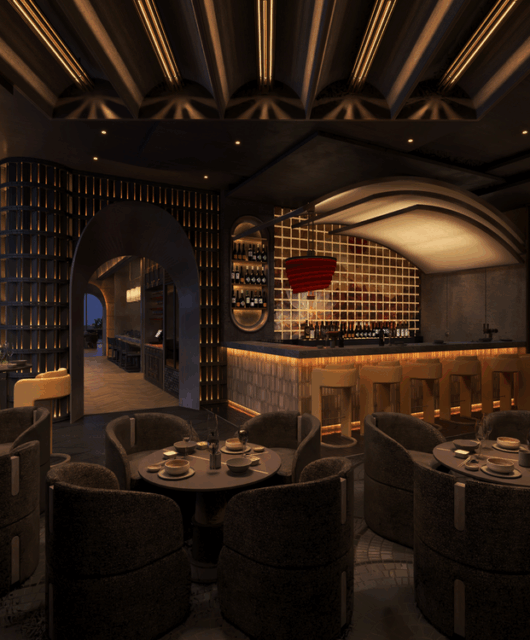DIFC Grand Mosque to open in Gate Avenue by 2019

The architect firm for this project is RMJM. DIFC’s vision was for RMJM to create a new vernacular for mosque design in the UAE, a beacon of modern Islamic design that makes reference to tradition by reinterpreting the essence of traditional mosque design in the contemporary context: in essence “to create a simple exterior and a fabulous interior”. The mosque will have a simple structure enveloped by a screen with graduated perforations allowing light to bathe the interior space, which is revealed when approaching from the outside. The materials and products used in the design will express the qualities of integrity, durability and humility. The Mosque is scheduled to open in 2019.
With a capacity of over 500 worshippers, the Mosque serves all five daily prayer times, Friday and Ramadan prayers, and is accessible 24 hours from street level through lifts and escalators.
Arif Amiri, CEO, DIFC Authority, commented: “The DIFC masterplan continues to introduce state-of-the-art, urban architecture that is designed to enrich the experience of our growing community of professionals, residents and visitors alike. DIFC Grand Mosque, together with the broader world-class offering of Gate Avenue, marks an important addition to the interconnected ecosystem we have at DIFC and bring a new dimension to the attractive infrastructure we have in place.








